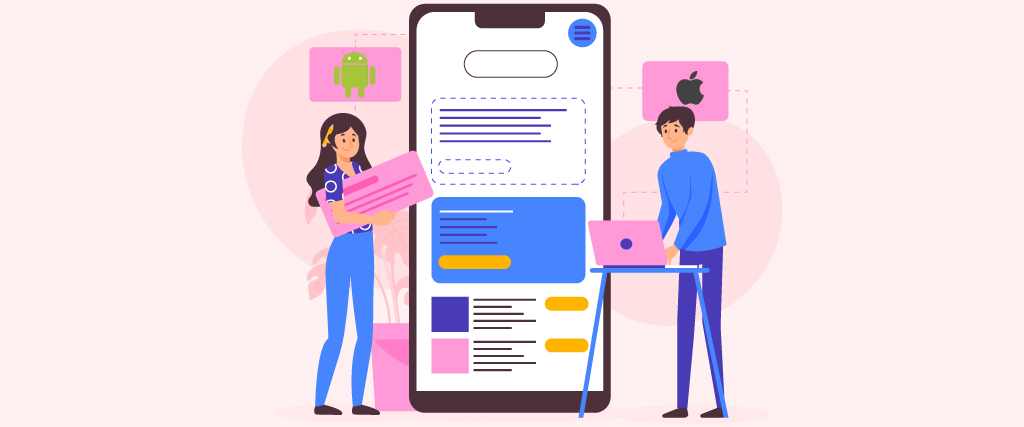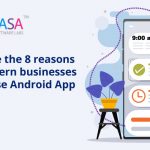Android vs iOS: As the mobile world becomes increasingly flooded with new gadgets and apps, people’s demand for more inventive features is skyrocketing.
In order to stand out in the market, all mobile phone firms must incorporate a WOW factor into their operating system.
Many times, Google and Apple have been found to be inspired by one other’s ideas and features in their continual race to engage their target audience with convenience and advancements.
They have demonstrated on several occasions that they select the greatest elements of each other’s inventions and incorporate them into their own. Please tell us more about these features.
IOS and Android are two terms that are often used interchangeably
Apple Inc. provides iOS, a mobile operating system. It’s mostly for Apple’s mobile devices, such as the iPhone and iPod Touch. iPhone OS was its previous name. In 2007, Apple released the initial version of iOS. Google LLC’s Android, on the other hand, is a mobile operating system.
It’s built on top of a modified Linux kernel and other open-source applications. It’s designed to work with touchscreen mobile devices like smartphones and tablets. It was written in C, Java, C++, and other languages. Google released the first version of Android in 2008.
Android features that were inspired by Apple include: Android vs iOS
1. The ability to share information quickly.
On Android devices, Google is releasing a new function called “Fast Share,” which works similarly to Apple’s AirDrop. This feature combines WiFi and Bluetooth functionality to communicate files, URLs, and text samples to users in close proximity.
2. Features that conserve battery life
Google has revealed that Battery Saver will be one of the most important Android Q improvements available in 2019.
When the battery is fully charged, this feature will automatically turn off the battery saver mode. When the charger is unplugged, it will also turn the Battery Saver mode back on.
3. Facial Identification
Face ID, or the feature of unlocking devices and apps using facial recognition, is another technology that Apple introduced to the market.
They were the first to develop the concept of scanning faces for authentication, which is today considered a key feature of Android handsets.
In fact, according to sources, Android Q will include powerful face recognition capabilities that will put Apple’s Face ID feature to the test.
4. Native augmented reality – Android vs iOS
Google has shown to be the finest in the market when it comes to experimenting with various AR-based features on smartphones and other devices.
They’ve opened up a slew of new possibilities for AR technology in the market. According to insiders, Google is incorporating augmented reality effects into its messaging software in order to compete with Apple’s iMessaging app.
5. Emojis are a fun way to express yourself.
Not only has Apple proven to be the market leader in terms of technical features, but it has also proven to be the industry leader in terms of making app experiences delightful.
From the outset, they have included a set of realistic emojis. And Google is known for striving to improve its emojis every year in order to keep up with Apple’s emojis.
6. Gesture Controls
One of the features stolen from Apple devices is the gesture control feature found on Android handsets.
Apple was the company that dropped the home screen button and pioneered the use of gestures for operating systems. Google has recently included this capability in the Android market.
7. Features of the App Store
Before installing any application, Apple used to ask customers for a one-time, all-or-nothing request. Google has now added Apple’s feature of apps requesting permission from users for the first time before using the camera or other capabilities.
Consider These Factors When Developing an Android App
1. Various Devices and Platforms
Windows-based desktop and laptop computers have a standard screen size, components, and form factor.
The mobile landscape is much more fragmented, with four major stages (Android, iOS, Windows Phone, and BlackBerry) that are all evolving at the same time.
Building mobile applications, on the other hand, necessitates more considerations when planning, such as which device platform to begin with, which versatile innovation option to select, what capacities the phone should support, and the requirement for a long-haul guide with sending on additional, next platforms.
Rather than sticking to traditional Windows-based desktop programming, adaptable developers should think about writing code for Android, Windows Phone, iPhone, and BlackBerry.
It’s significantly more difficult to plan an application that can be upgraded for numerous gadgets with variable screen densities and screen sizes.
2. Dimensions of the display
The screen size of desktop or laptop applications greatly exceeds that of mobile devices. Simplifications and a reevaluation of navigation are required to outline a device that fits in your pocket effectively.
While a desktop application may include tabs, options, and connections on both sides of the screen and in accordance with content, a mobile application must focus on the quick capacity, limiting the number of options to only those needed for the immediate assignment or highlight.
3. Graphical User Interface – Android vs iOS
Instead of using a mouse and keyboard, clients can employ a unique way of client input called touch. Even a single touch can elicit a range of responses, such as a single tap, double-tap, lengthy touch, motion, and excursion.
Every single one of these activities needs to be documented. Desktop PCs and laptops have information passage consoles, allowing for comfortable, rapid writing with both hands and all fingers.
Finish up
Apple was the first to propose the concept of creating an ecosystem in which all Apple goods work in unison.
Google has recently adopted the idea of integrating all of its services in order to encourage consumers to use them and, as a result, increase their earnings directly or indirectly.
So, these were some of the major features that first appeared on Apple’s iOS before being implemented on the Android market, making the two platforms appear to be identical to some extent.
Read More: ANDROID VS IOS: WHAT IS THE MAIN DIFFERENCE BETWEEN THEM?























